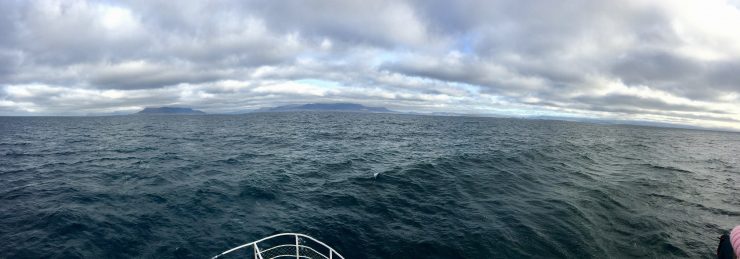As a part of my class trip to Iceland I took part in a whale watching excursion. As my professor led us to the harbor I noticed many vessels with large harpoons attached at the sides. I was very confused and wondered why my professor was taking us past these large whaling ships when we were about to go whale watching and appreciate the animals from a distance. Iceland, one of the three remaining countries where the practice of whaling is legalized (also Japan and Norway), boasts the ability of whaling ships and whale watching ships to operate side-by-side in “harmony.” I use that word loosely after listening to the rant our whale watching guide about the “monstrous whalers.” She told us to boycott any restaurant that serves whale steaks (which turned out to be quite a few) by marching up to the host or waiter and inform them that you are taking your business elsewhere, perhaps to the vegan restaurant down the road. Below you can see a clip of some humpback whales that surfaced while we were sailing.
On our trip out into the chilly Icelandic waters, we watched as humpback whales surfaced around us, swimming so carefree among themselves and our vessel. It made it hard to imagine killing these creatures. I did, however, attempt to see it from a cultural side. I remember studying whaling in Alaska, where the practice was held sacred by the native Inuit people. Who am I to tell them that the practice is wrong? This got me wondering about the history of Icelandic whaling and the significance to the people. I started asking around and from many native Icelanders I received a similar response as to why the whaling industry continues: tourism. Many shared their opinion that visitors all over the world come to Iceland with this preconceived notion of what Iceland is all about. I witnessed this first hand as all the gift shops sell “Icelandic polar bears” even though polar bears do not exist in Iceland. Besides soaking in the thermal baths and climbing on glaciers, Iceland’s booming tourism industry has created this demand for exotic whale steaks as a part of the “Icelandic experience” and continues to drive down populations of whale species.
So what can you do? Visit Iceland, enjoy all of its natural beauty. Dine on the delicious fresh fish and shellfish that are caught in its water, hike glaciers and traverse waterfalls, but if you must avoid one thing, avoid the consumption of whale. Support the Icelandic tourism industry, just without causing harm to a harmless creature (like me in the picture below).


